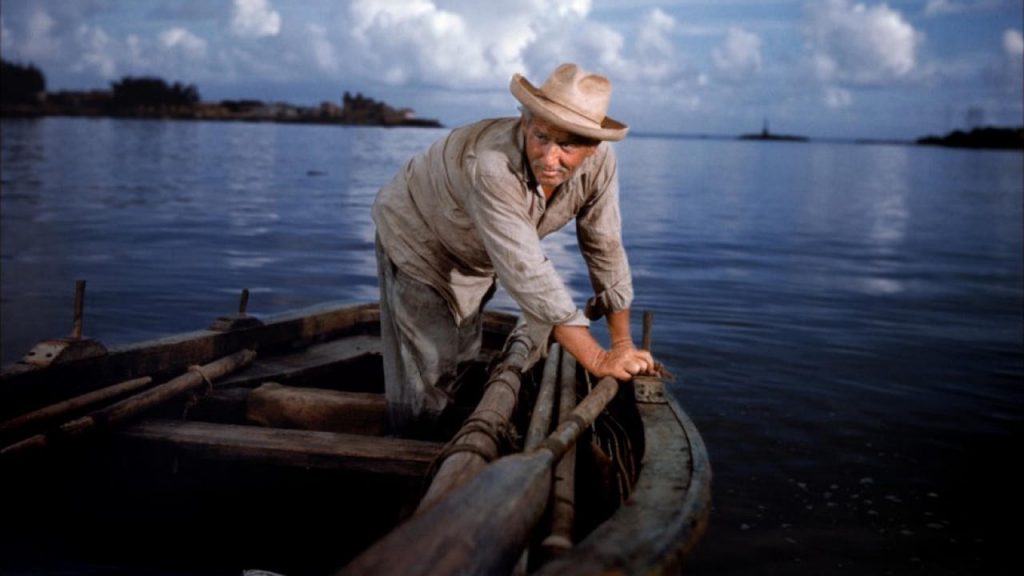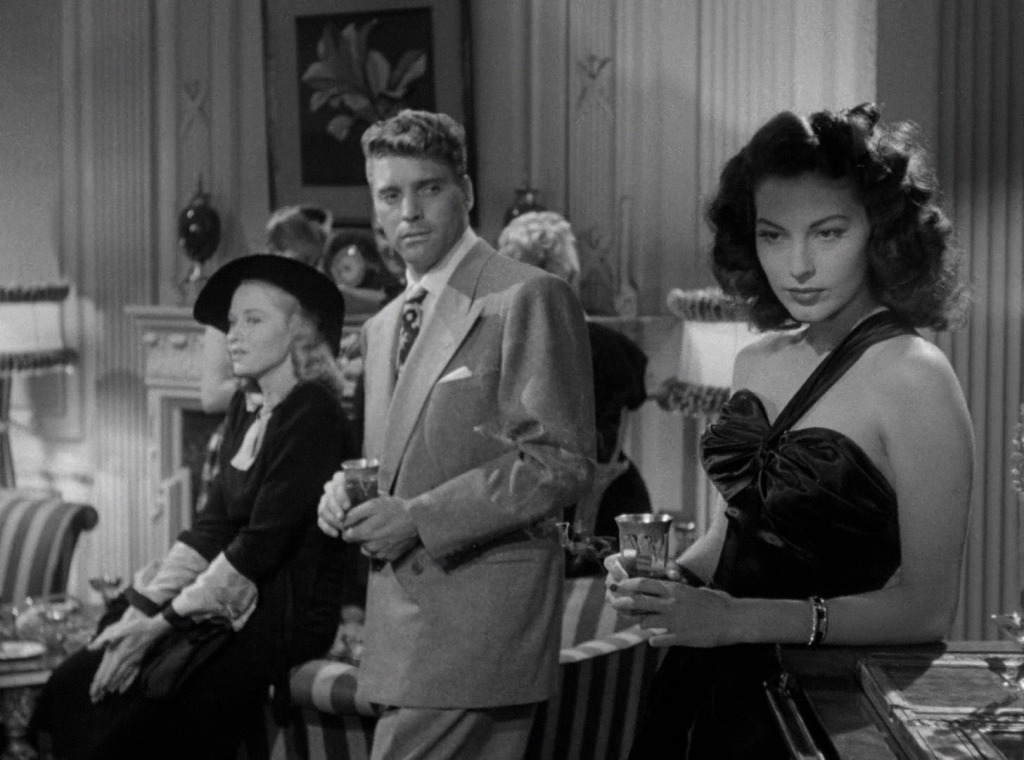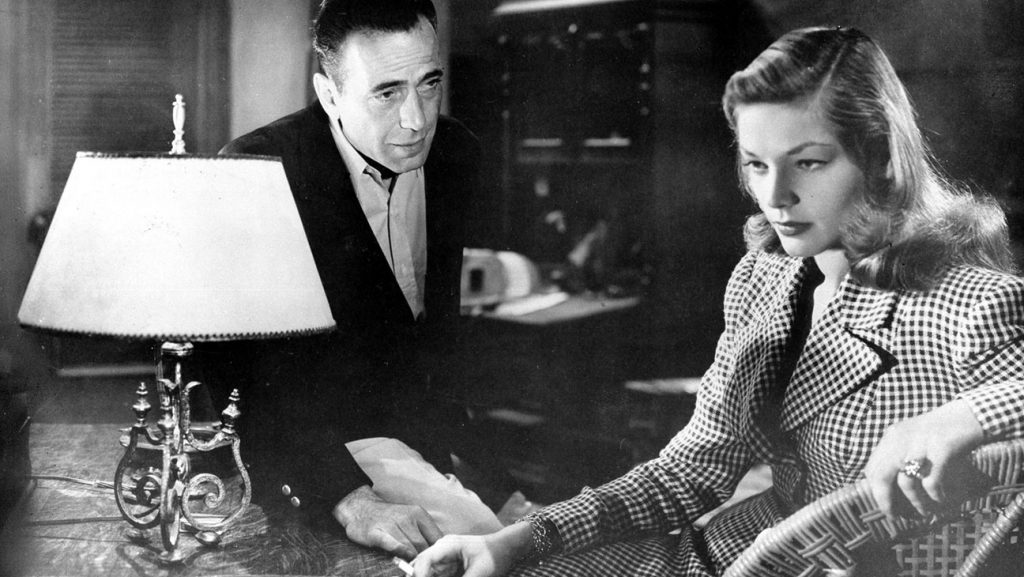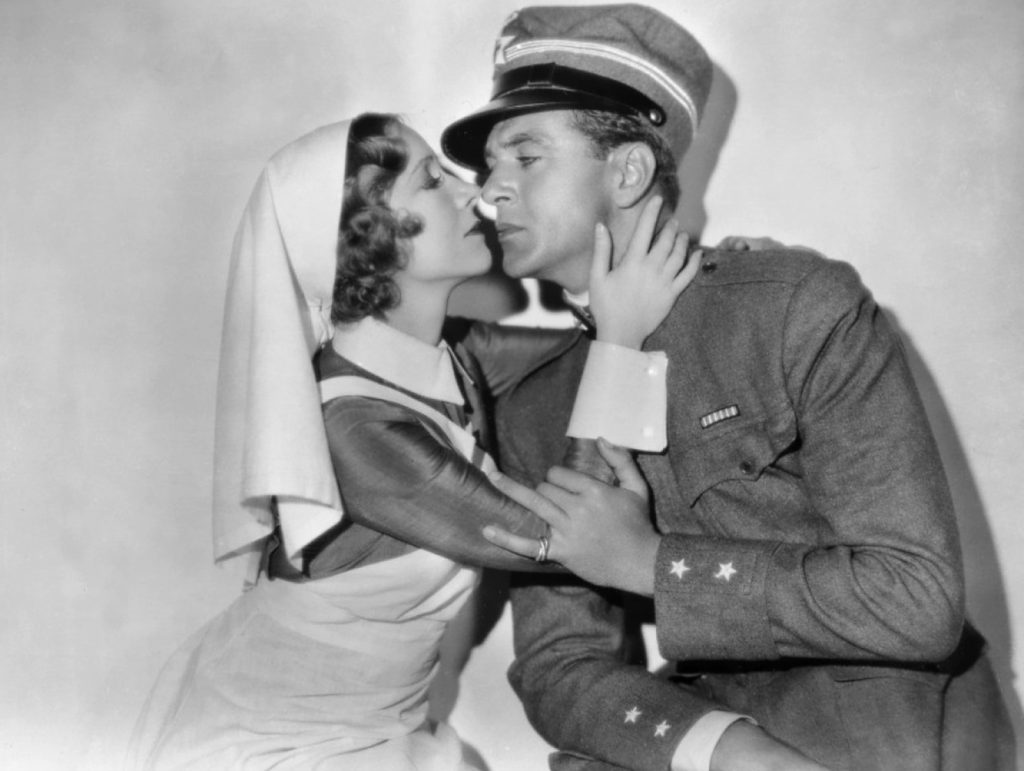1. L'Adieu aux armes
(roman)
L'Adieu aux armes est le troisième roman d'Ernest Hemingway, publié en
1929. C'est un roman d'inspiration autobiographique, dont l'action se déroule
en Italie pendant la Première Guerre mondiale. Écrit à la première personne, il
relate l'histoire d'amour tragique entre Frederic Henry, ambulancier américain
engagé dans l'armée italienne, et Catherine Barkley, infirmière anglaise. Dans
un style froid et laconique, Hemingway dépeint une guerre futile et
destructrice, le cynisme des soldats et les déplacements de population.
Ce roman est considéré comme l'un des plus grands romans de langue
anglaise du xxe siècle.
Le titre est tiré d'un poème de George Peele.
Résumé
Divisé en cinq livres et quarante et un chapitres, l'Adieu aux armes est
un récit à la première personne. Le narrateur est Frédéric Henry, un
ambulancier américain de l'armée italienne lors de la Première Guerre mondiale.
Dans le premier livre, le narrateur est présenté à Catherine Barkley,
une infirmière anglaise, par son ami, le chirurgien Rinaldi. Frédéric tente de
la séduire, sans s'engager dans une relation sérieuse, et leur relation
commence mais progressivement il ressent de plus en plus de sentiments
amoureux. Au front, dans les environs de Gorizia, Frédéric est blessé par un
tir de mortier et est transféré à l'hôpital américain de Milan, où Catherine
est également affectée.
Le deuxième livre raconte le temps passé en commun par les deux
principaux protagonistes à Milan durant l'été avec leur attachement qui va
croissant. Une fois son genou guéri, il est atteint de jaunisse mais est
renvoyé de l'hôpital car sa forte consommation d'alcool est découverte. Avant
son départ, il apprend que Catherine est enceinte de trois mois.
Dans le troisième livre, il retourne à son unité et constate que le
moral y a beaucoup baissé durant son absence. Peu après a lieu la bataille de
Caporetto. Les Autrichiens arrivent à percer la ligne italienne, obligeant
ainsi les combattants à se retirer. Du fait de la lenteur et du caractère désorganisé
de la retraite, et pour éviter que ses hommes et lui ne soient pris pour cible
par l'ennemi, Henry décide de sortir de la route empruntée par l'armée et la
population, mais ses hommes et lui se perdent et l'un de ses ambulanciers est
abattu sous ses yeux. Henry finit par rattraper le convoi qui se replie. À ce
moment-là, en tant qu'officier, Henry est mis à l'écart pour être jugé par une
police de l'armée qui interroge et exécute sommairement tout officier pouvant
être tenu pour responsable de la défaite. Pour échapper à ce simulacre de
justice, Henry plonge dans une rivière. Il parvient à rejoindre Milan en train.
Dans le quatrième livre, Frédéric retrouve Catherine à Stresa mais il
est prévenu en pleine nuit qu'il va être arrêté au petit matin. En pleine nuit,
dans une barque, les deux amoureux fuient vers la Suisse à la rame.
Dans le dernier livre, Frédéric et Catherine mènent une vie paisible
près de Montreux jusqu'à l'accouchement. L'enfant est mort-né et Catherine
décède peu après sa naissance des suites d'une hémorragie.
Personnages
Frédéric Henry :
lieutenant américain, ambulancier dans la Croix-Rouge lors de la Première
Guerre mondiale ;
Catherine Barkley :
infirmière anglaise de la Croix-Rouge qui tombe amoureuse de Henry ;
Rinaldi : ami chirurgien
et camarade de chambre de Henry ;
Helen Ferguson :
infirmière et amie de Catherine ;
Le prêtre
Passini et Bonello :
ambulanciers sous les ordres d'Henry ;
Manera, Gavuzzi,
Gordini, Piani, et Aymo : autres ambulanciers ;
Mrs. Walker
Miss Gage : infirmière
dans l’hôpital américain de Milan ;
Miss Van Campen
Dr. Valentini
Meyers
Ettore Moretti
Ralph Simmons
Le comte Greffi
Thèmes
La guerre
Comme le suggère le titre, L'Adieu aux armes évoque la guerre et
décrit les événements qui conduiront Frédéric Henry à s'en échapper.
Hemingway décrit dans cette œuvre la brutalité absurde et le chaos de
la guerre. La scène de la retraite de l'armée italienne est ainsi considérée
comme l'une des plus puissantes évocations de la guerre dans la littérature
américaine.
Mais Hemingway ne condamne pas la guerre et ce roman n'est pas l'œuvre
d'un pacifiste. La guerre est au contraire dépeinte comme un événement
inévitable dans un monde cruel et absurde. L'auteur suggère que la guerre n'est
que le sombre et meurtrier prolongement d'un monde dans lequel l'amour est
vulnérable et désarmé.
L'amour
L'amour est un thème central du roman. Le héros préfère se désengager
des combats, déserter, pour être avec Catherine.
Inspiration autobiographique
Le roman est en partie autobiographique, Hemingway ayant lui-même
intégré la Croix-Rouge Italienne en 1918, dans le but d'être envoyé sur le
front. À la suite d'une blessure, il séjourne trois mois dans un hôpital
milanais où il rencontre l'infirmière américaine Agnes Von Kurowsky, qui lui
inspira le personnage de Catherine Barkley dans l'Adieu aux armes.
Le titre anglais est à double sens : A Farewell to Arms signifie à la
fois un adieu aux bras (et par là le roman d'amour) et un adieu aux armes
(évoquant le thème du roman de guerre).
Éditions
Édition originale américaine
A Farewell to Arms, Scribner, 1929
Éditions françaises
L'Adieu aux armes, traduit par Maurice-Edgar Coindreau, Paris,
Gallimard, 1938
L'Adieu aux armes, traduit par Maurice-Edgar Coindreau, lithographies
originales de Jean Carzou, Monte Carlo, Éditions André Sauret, 1964
Adaptations
Gary Cooper et Helen Hayes dans l'adaptation de 1932.
Le roman a été porté à l'écran à deux reprises :
1932 : L'Adieu aux armes (A Farewell to Arms), film américain réalisé
par Frank Borzage, avec Gary Cooper et Helen Hayes
1957 : L'Adieu aux armes (A Farewell to Arms), film américain réalisé
par Charles Vidor, avec Rock Hudson et Jennifer Jones
Un scénario très semblable se retrouve dans l'adaptation du journal
d'Hemingway :
1997 : Le Temps d'aimer (In Love and War), film américain réalisé par
Richard Attenborough, avec Sandra Bullock
L'Adieu aux armes
(film, 1932)
Gary Cooper, Adolphe Menjou, Mary Philips et Helen Hayes
L'Adieu aux armes (A Farewell to Arms) est un film américain réalisé
par Frank Borzage, sorti en 1932.
Synopsis
Le lieutenant Henry, Américain engagé auprès de l'armée italienne
contre l'Autriche comme ambulancier, tombe amoureux d'une infirmière, qui ne
lui dit pas qu'elle est enceinte et va, parce qu'elle est enceinte, être
renvoyée de son service. Son ami et supérieur italien l'empêche de recevoir le
courrier de sa bien-aimée. L'absence de nouvelles le pousse à déserter pour la
retrouver, mais elle s'est réfugiée en Suisse, où la misère et l'isolement
viennent à bout de ses forces…
Fiche technique
Titre : L'Adieu aux
armes
Titre original : A
Farewell to Arms
Réalisation : Frank
Borzage
Scénario : Benjamin
Glazer et Oliver H.P. Garrett d'après le roman L'Adieu aux armes de Ernest
Hemingway
Durée : 89 minutes
Distribution
Helen Hayes : Catherine
Barkley
Gary Cooper :
Lieutenant Frederic Henry
Adolphe Menjou : Major
Rinaldi
Récompenses
En 1934, le film fut nommé pour quatre
Oscars, dont ceux du meilleur film et des meilleurs décors (Hans Dreier et
Roland Anderson), et remporta finalement ceux de la meilleure photographie
(Charles Lang) et du meilleur son (Franklin B. Hansen).
2. Pour qui sonne le
glas- For Whom the Bell Tolls (roman)
Pour qui sonne le glas (titre original: For Whom the Bell Tolls) est
un roman d'Ernest Hemingway publié en 1940 et fortement inspiré de son vécu de
journaliste pendant la guerre civile espagnole, dont il fait revivre
l'ambiance.
Ce livre est une ode au peuple espagnol tel qu'a pu le voir Hemingway
et montre les différences entre le mode de pensée anglo-saxon et le sens du
destin des Espagnols.
Résumé
Le livre raconte la mission d'un jeune professeur américain, Robert
Jordan, engagé dans les Brigades internationales, qui est envoyé en Castille
par le général Golz dans les jours qui précèdent l'offensive de Ségovie pour
faire sauter un pont.
L'offensive républicaine étant imminente, ce pont doit être détruit
dès le déclenchement de l'attaque, mais ni avant ni après, pour couper la route
aux troupes de renforts franquistes.
Pour y arriver, Robert Jordan rejoint un groupe de partisans
antifascistes derrière les lignes, cachés dans les montagnes.
Pendant trois jours, Robert Jordan prépare son attaque, qui semble
désespérée, et partage le quotidien de ces guérilleros.
Le chef des partisans, Pablo, démoralisé après des mois de combat,
comprenant les conséquences de ce projet, lui fait des difficultés. Néanmoins,
il est aidé par les autres résistants qui deviendront ses amis, et notamment
Maria dont Robert Jordan tombe éperdument amoureux au premier regard, et
réciproquement.
Cette jeune fille a été recueillie par le groupe de résistants
républicains lors de l'attaque d'un train dans lequel elle était prisonnière.
Maria a été détenue, violée et tondue par les nationalistes à cause des
opinions politiques républicaines de son père.
Maria, sous la tutelle de Pilar, la matrone du groupe, qui lui a
redonné le goût de vivre, est confiée à Robert Jordan. Celui-ci parfaitement
conscient de l'issue probable de sa mission veut vivre cette passion réciproque
en 72 heures comme si c'était leur vie entière.
La veille de l'attaque, une troupe voisine de résistants, celle
commandée par El Sordo, qui devait les aider, se fait repérer alors qu'elle
volait les chevaux nécessaires à l'opération. Une tempête de neige impromptue
et qui se termine trop tôt pour effacer les traces permet aux franquistes de
les suivre à la trace et de les débusquer sans que la troupe de Robert Jordan,
trop faible et se camouflant pour ne pas donner l'alerte, puisse leur porter
secours.
Voyant les mouvements de troupes nationalistes, Robert Jordan envoie
un message au général Golz pour l'avertir qu'il n'y aura pas l'effet de
surprise escompté, mais que si l'attaque n'est pas ajournée, il se tiendra prêt
à détruire le pont au premier coup de canon entendu. Mais ce message arrivera
trop tard.
Dans la nuit précédant l'attaque, Pablo le chef des partisans, déserte
après avoir débusqué les détonateurs qu'il jette à l'eau. Puis, pris de
remords, il revient avec des renforts.
À l'aube, entendant les bombardiers républicains larguer leurs bombes,
la troupe de Robert Jordan lance l'attaque du pont, le détruit et se replie
avec de lourdes pertes.
En pleine retraite, Robert Jordan est blessé. Intransportable, il
reste en arrière pour couvrir ses amis après leur avoir fait ses adieux.
Contexte et titre
Le titre est une référence au poète et métaphysicien anglais John
Donne, et à son poème Aucun homme n'est une île cité en introduction au roman :
[…] n'envoie jamais demander pour qui sonne le glas : il sonne pour toi.
Certains croient qu'Hemingway a écrit ce roman dans la chambre 525 de
l'hôtel Ambos Mundos La Havane mais l'hôtel Sevilla La Havane démontre un fait
contraire en affichant une lettre écrite de la main propre d'Ernest Hemingway
qui ne porte aucune allusion à cet endroit[réf. nécessaire].
Relations avec des événements réels
Le personnage d'André Massart est inspiré de l'homme politique
français André Marty.
Le personnage de Karkov est inspiré du journaliste et agitateur
soviétique Mikhaïl Koltsov.
Au cinéma
Son adaptation au cinéma, réalisée par Sam Wood en 1943, a connu un
grand succès, avec en tête d'affiche Ingrid Bergman et Gary Cooper.
Importance et hommages
Pour qui sonne le glas est le livre de chevet de Barack Obama, mais
était aussi celui de Fidel Castro (Biographie à deux voix d'Ignacio Ramonet).
Le personnage du Varlov est inspiré de l'espion du NKVD, Felbing.
Pour qui sonne le glas occupe la 8e
place au classement français des Les cent livres du siècle, établi au printemps
1999 dans le cadre d'une opération organisée par la Fnac et Le Monde.
Pour qui sonne le glas (film) - For Whom the Bell Tolls
Pour qui sonne le glas (For Whom the Bell Tolls) est un film américain
réalisé par Sam Wood sorti en 1943.
Synopsis
Ce film est tiré du roman d'Ernest Hemingway Pour qui sonne le glas.
Venu combattre aux côtés des républicains lors de la Guerre d'Espagne,
l'américain Robert Jordan est chargé de faire sauter en Castille un pont
défendu par les fascistes, afin de couper la route à l'armée franquiste. Il
tombe amoureux de Maria, une des résistantes du groupe dirigé par Pablo et sa
femme Pilar.
Commentaires
De la séquence d'ouverture à la séquence de fermeture, le film est
traversé par trois thèmes majeurs.
Le thème de la mort. Robert a pour mission de faire sauter le pont et
il sait qu’il n’y survivra pas. Pablo, en connaissant la mission, sait
immédiatement qu’elle conduira à leur mort. Sordo, aussi, y voit cette issue inévitable.
Presque tous les personnages contemplent leur propre mort.
Le thème de la camaraderie accompagne la perspective de la mort,
sacrifice des personnages pour une juste cause. Robert Jordan, Anselmo et les
autres sont prêts à le faire, comme «tout homme de bien le ferait», avec des
accolades fréquentes qui renforcent l’impression d’un compagnonnage intense.
Après avoir annoncé à Joaquim l’exécution de toute sa famille, tout le monde
l’embrasse et déclare être maintenant sa famille. Cet amour des uns pour les
autres se porte aussi à la terre d’Espagne, dès le début jusqu’à la fin. C’est
un hymne à la vie traversée par la mort, la vie simple et poignante décrite
comme «sentir son cœur battre contre le sol tapissé d’aiguilles de pin».
Le thème du suicide chez tous les personnages où chacun préfère se
donner la mort ou être achevé par un camarade plutôt qu’être capturé. L’image
finale est Robert Jordan, blessé et incapable de suivre ses compagnons, qui se
prépare à mourir en protégeant ses compagnons par une embuscade contre les
poursuivants.
Fiche technique
Titre : Pour qui sonne
le glas
Titre original : For
Whom the Bell Tolls
Réalisation : Sam Wood
Scénario : Dudley
Nichols d'après le roman éponyme d'Ernest Hemingway
Distribution
Gary Cooper: Robert
Jordan
Ingrid Bergman: María
Akim Tamiroff: Pablo
Arturo de Córdova :
Agustín
Vladimir Sokoloff :
Anselmo
Le film est un véritable succès commercial. Il engrange 8,27 millions
d'entrées en France et 9,70 millions d'entrées au Royaume-Uni1. Il se classe
premier au box-office américain de l'année 1943.
Autour du film
C'est la deuxième fois que Gary Cooper incarne au cinéma un héros
d'Hemingway : il avait joué le rôle de Frederic Henry dans L’Adieu aux armes de
Borzage, sorti en 1932.
Récompenses et distinctions
Oscar de la meilleure actrice dans un second rôle pour Katína Paxinoú





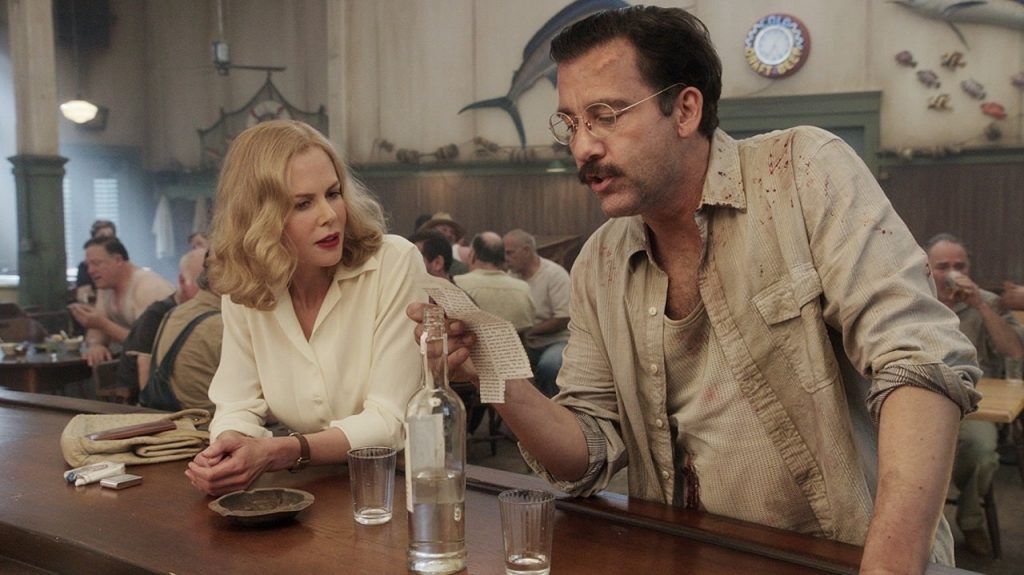
 THE OLD MAN AND THE SEA
THE OLD MAN AND THE SEA